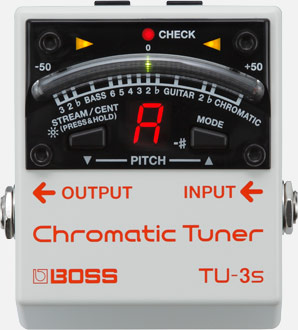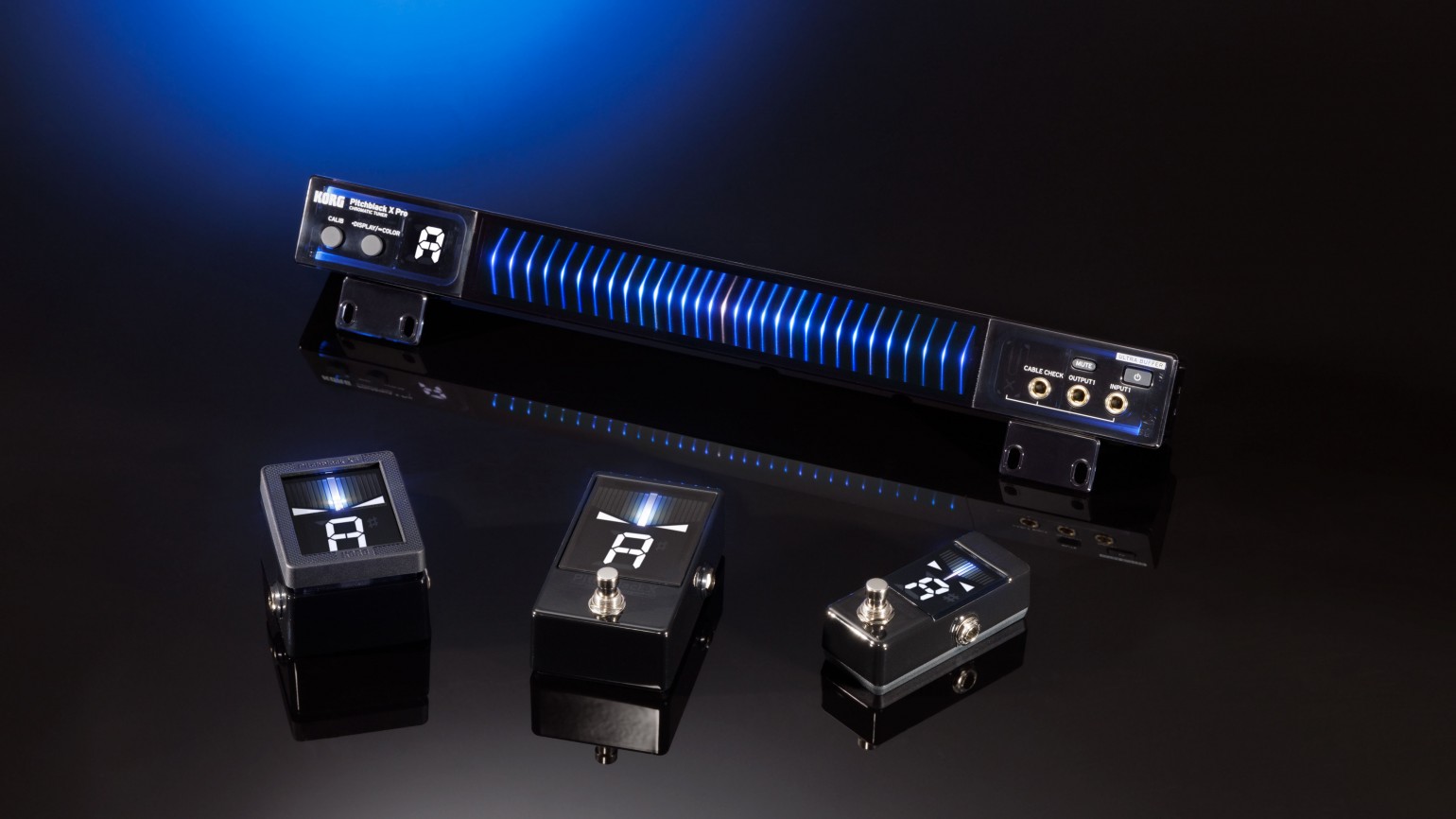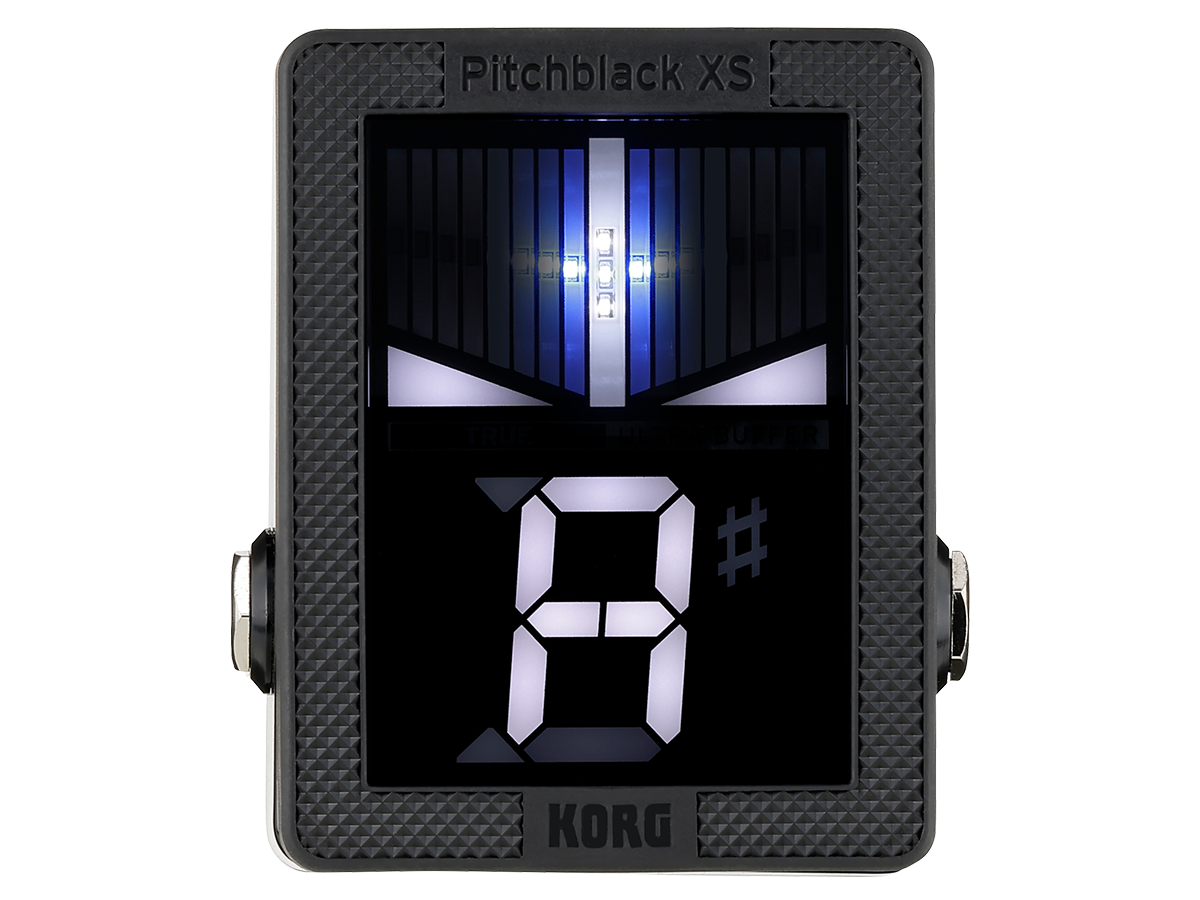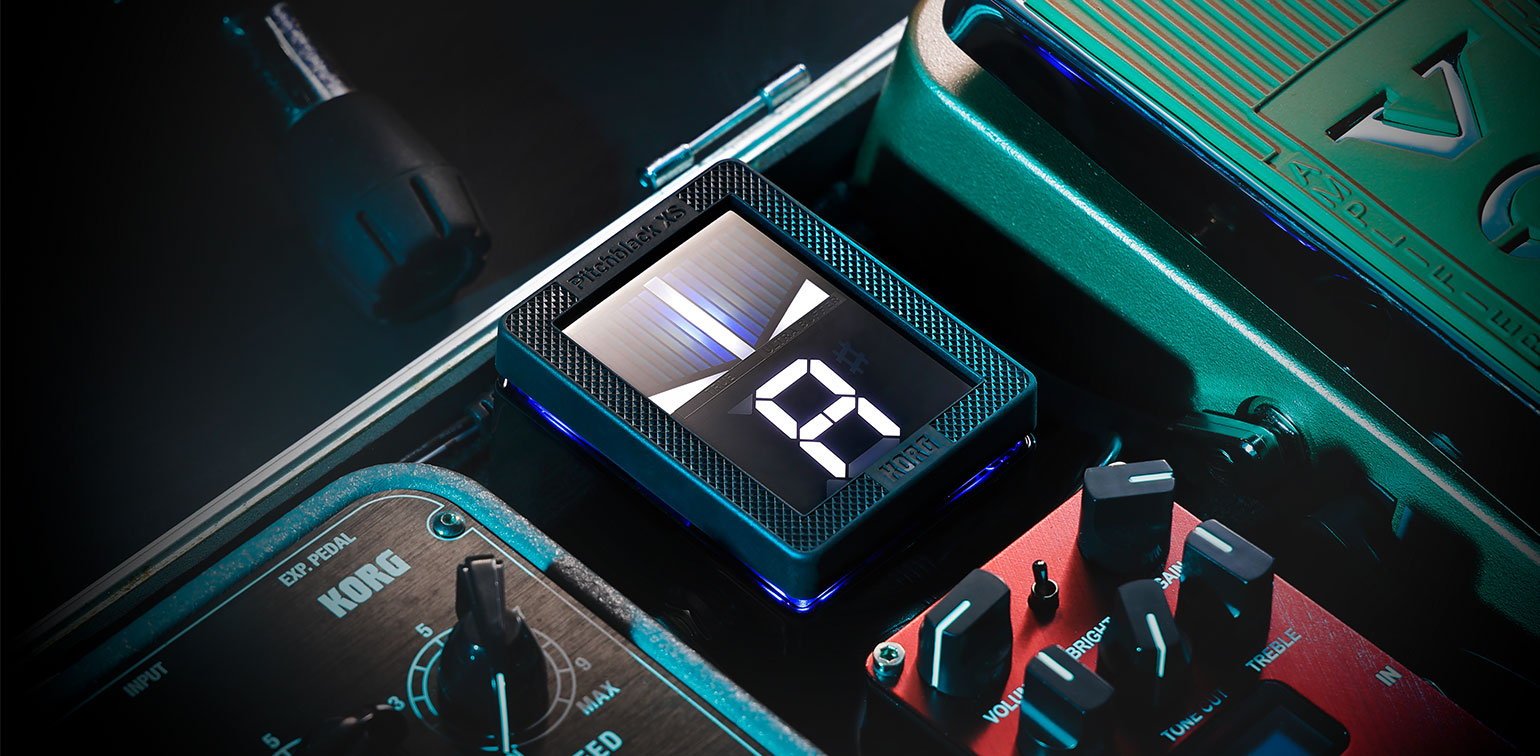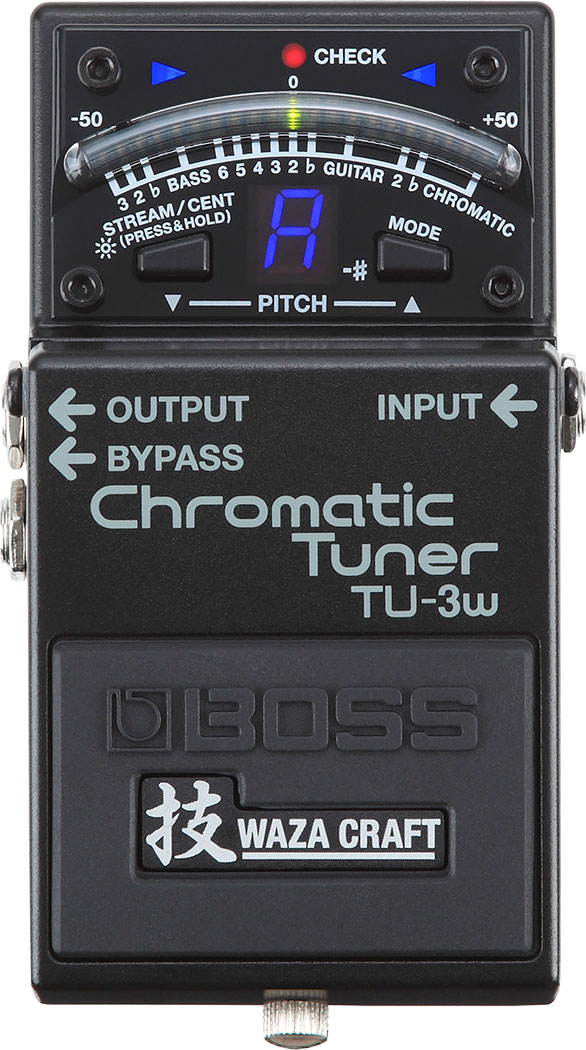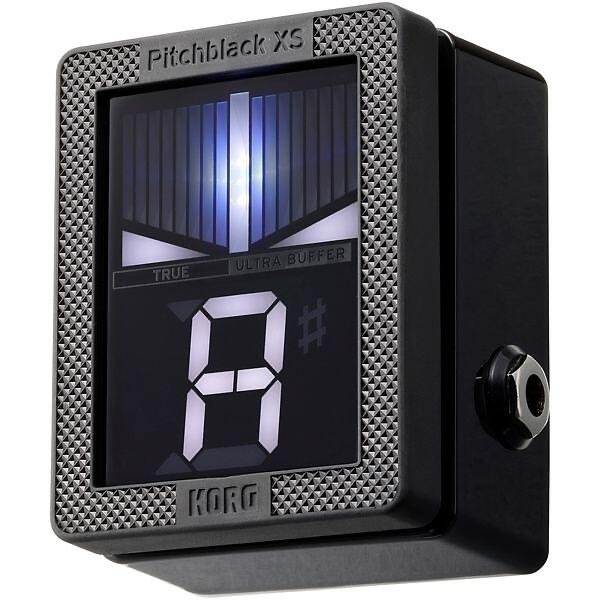Pedal tuners and product design
Firstly, sorry about caring a bit too much about guitar tuners. You see, as a side gig, I help people with their pedalboards (especially people using multiple guitars on stage), and I often recommend that they get a new tuner. But no tuners are exactly like I want!
While this post is mostly hard core nerd out on pedal tuners, there are also some comments on product design in general. Let’s go!
A new product series gives (false) hope
I prefer always-on tuners that you mute elsewhere (volume pedal or otherwise), and this makes foot-switches redundant. That’s why I like the idea behind Boss TU3-S.
So, when I saw the new(ish) Korg X tuners, I was stoked – especially for the XS. The pedal to display size ratio is great, the switch design is cool, and I like that it’s more squared off than your typical mini pedal. This allows it to fit into odd slots on pedalboards.
However, contrary to what the product page on Sweetwater says (as of november 2022), there is no way to tune with this brand-new pedal without muting your signal! I got this confirmed by Korg USA, and they said they would inform Sweetwater and make them change their product description.
«But why tune without muting? Do you want everyone to hear your off-pitch notes?» I hear you ask. But it’s not that I want to tune with sound. I just don’t want the tuner to be the only way to mute while tuning!
Space is a premium on pedalboards – but so is reachability! If you already have a volume pedal or an AB switch with a mute, these have to be reachable no matter what. Then it’s nice to be able to stick the tuner somewhere that might be hard to reach, but that’s still visible. (Also, if you’re a bassist like me, you could sneak in a little tuning during some long root notes while playing!)
I know that the majority of rigs don’t need this function, but I just find it absolutely baffling that they didn’t include this as an option in at least one of the three new pedal tuners they released.
Korg X Mini vs. Polytune Noir 3
(Gallery)
To illustrate that I don’t understand what the Korg product team was thinking with this series, let me compare the brand new X Mini to an established competitor: the Polytune Noir 3.
- Buffer: Both have good buffers, but the Noir 3’s can be changed to true bypass (dip-switch on the outside). The X Mini doesn’t have this option at all. A guitar signal that goes through normal instrument jacks over a long distance (like from your guitar, through all your pedals and to an amplifier) will lose tone, if it doesn’t get a push. This is what the buffers do, and you should at least have one close to the beginning of your pedal chain and preferably one at the end. Since some pedals need to be before any buffers, being able to turn it off is a good thing.
- Accuracy: X Mini: ± 0,1 cents – Noir 3: ± 0,02 cents
- Always-on: The Noir 3 has this on an external dip-switch as well. The X Mini doesn’t have this option.
- Special sauce: The Noir 3 has the Polytune Mode, allowing you to check the tuning on all six strings at once.
- Other specs: Pedal size, display size and price are about the same (the price is literally the same here in Norway).
Pride and product design
I’m trying to imagine being on the Korg product team…
These tuners are what I would classify as «compact mid-range tuners», and I think the Noir 3 is the most well-rounded option in the market. However, it is more than 3,5 years old. Korg was behind, with their oldPitchblack mini, but now they could get an advantage: They would soon have the newest tuners on the marked, and they knew beforehand exactly what they had to beat.
And then they don’t even try..?
The Polytune Mode is probably mega-patented, so Korg couldn’t do that. But shouldn’t that make them at least match the competition on basic functions? Or maybe try to undercut them on price? Did someone try to tell their manager «Our brand-new tuner is not only missing their signature feature, but it also has fewer functions and less accuracy. And we’re neither cheaper nor more compact!»?
I don’t think I would be as annoyed if the products were plain rubbish. It’s extra infuriating since they’re so close to being great! Korg makes the best-looking tuners, in my opinion, and their build quality is good for the price. And the XS in genuinely pretty innovative. The team behind the foot-switch did an impressive job, but then they got let down by this one omission.
Long-lasting thoughts
I ♥️ details. And sometimes details are expensive. Maybe the good materials cost more, or perhaps a different process makes every unit more costly. This adds up, over the years of a product’s life. If this were a different post, this would be where I’d make a remark about capitalism and the focus on profit over creativity and pride. But while unhinged capitalism usually is the root issue, I don’t think cost-cutting is Korg’s main problem here. Making the buffer switchable and always-on, isn’t expensive to design or produce. They just had to bother. To me, this whole series of tuners reeks of a corporation not making their products as good as they can, but only as good as they have to.
A thing that fascinates me about product design, is that one good thought last for years. It lasts through all the years a product is produced and all the years it’s used. I think this is one of the reasons I love things that are thoroughly considered. Now, I know that real artists ship, and you can’t spend too long designing, revisioning and perfecting.
The famous toaster button
Take a look at the button layout on this Breville toaster:
Cancel, Frozen, and Bagel is all right – but it’s the last one it’s all about. I can’t imagine that specific function increases the production cost that much – it’s just a really good idea. It’s one good thought, that then affects millions of slices of bread.
Korg should’ve thought about their new pedal series a bit more.
Addendum
This post started as a Reddit-comment. In that, I asked (and then answered) two additional tuner questions:
Which tuners would I recommend?
The Peterson Strobostomp HD has everything (almost too much), and is great. If it had an all-screen version without the foot-switch, this would be my go-to.
The Turbo Tuners are nice – especially if you want great accuracy and don’t need a buffer.
The aforementioned Polytune Noir 3 is a great option for the price, especially if you like the Polytune thing.
I just love the way the Boss TU3-W looks! With always-on and a good buffer, the only drawbacks are accuracy and size. I’m not confident that I can rationally recommend this for the price, though – but who chooses gear just based on rationality!?
I know it’s silly, but I would’ve liked the Boss TU3-S a lot more if it had the black TU3-W look. This is still worth checking out, as long as you know about the average buffer and accuracy.
And lastly, a twist recommendation: The Korg XS! I mean, most people probably aren’t concerned with the lacking always-on anyway. So, then this is just a compact, cool looking tuner with a switchable buffer and “good-enough” accuracy. And you could make it “always on” by putting it in a tuner out or a loop of sorts – even though you then waste the buffer, and it’s not always practical.
What would my perfect tuner look like?
- “All” display design. Mutability is a «nice to have».
- Always-on option (obviously 😛)
- A good, but switchable, buffer.
- Good enough accuracy, and some calibration options.
- Top-mounted jacks.
- Power out is nice.
- A cool, dark look. 😎
In other words, the Korg XS is really, really close. Always-on, top-mounted jacks (the other two can keep the side-mounted) and maybe a tad more accuracy (I don’t care, but I know some do) and we’re there. In five years, Korg?
